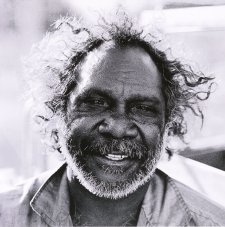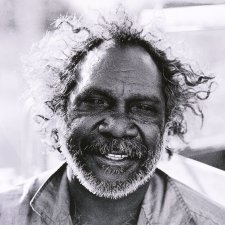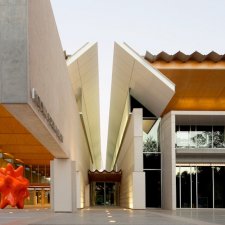- About us
- Support the Gallery
- Venue hire
- Publications
- Research library
- Organisation chart
- Employment
- Contact us
- Make a booking
- Onsite programs
- Online programs
- School visit information
- Learning resources
- Little Darlings
- Professional learning
Paddy Jaminji (Jampijin) (1912-1996), Kija artist, spent much of his life in and around his country near Bedford Downs station in Western Australia. A stockman in his youth, he was one of the first people to take up residence at Warnum, near Turkey Creek, a settlement that was established as many indigenous pastoral workers lost their jobs in the mid-1970s. In 1977, Jaminji was chiefly responsible for creating the paintings used in the first Kurirr Kurirr (Krill Krill) ceremony, which arose out of a dream by Rover Thomas, to whom he was a classificatory uncle. Alongside Thomas, he pioneered what is now known as the East Kimberly School of painting, often featuring big blocks of single colour, outlined with round white dots, rounded hill shapes and stylised boab trees. He usually painted on board, but sometimes used canvas and made sculptures. From the mid-1980s, as his nephew’s fame eclipsed his own, increasing blindness put a stop to Jaminji’s career. His work was exhibited in The Continuing Tradition (1989), Images of Power (1993), Aratjara (1993-4) and Roads Cross (1994), the latter a Rover Thomas retrospective at the National Gallery of Australia. The Holmes à Court Gallery, Perth, staged the retrospective Paddy Jaminji in late 2004.
Purchased 2005
© Martin van der Wal



On one level The Companion talks about the most famous and frontline Australians, but on another it tells us about ourselves.



Djon Mundine OAM brings poignant memory and context to Martin van der Wal’s 1986 portrait photographs of storied Aboriginal artists.



Visit us, learn with us, support us or work with us! Here’s a range of information about planning your visit, our history and more!